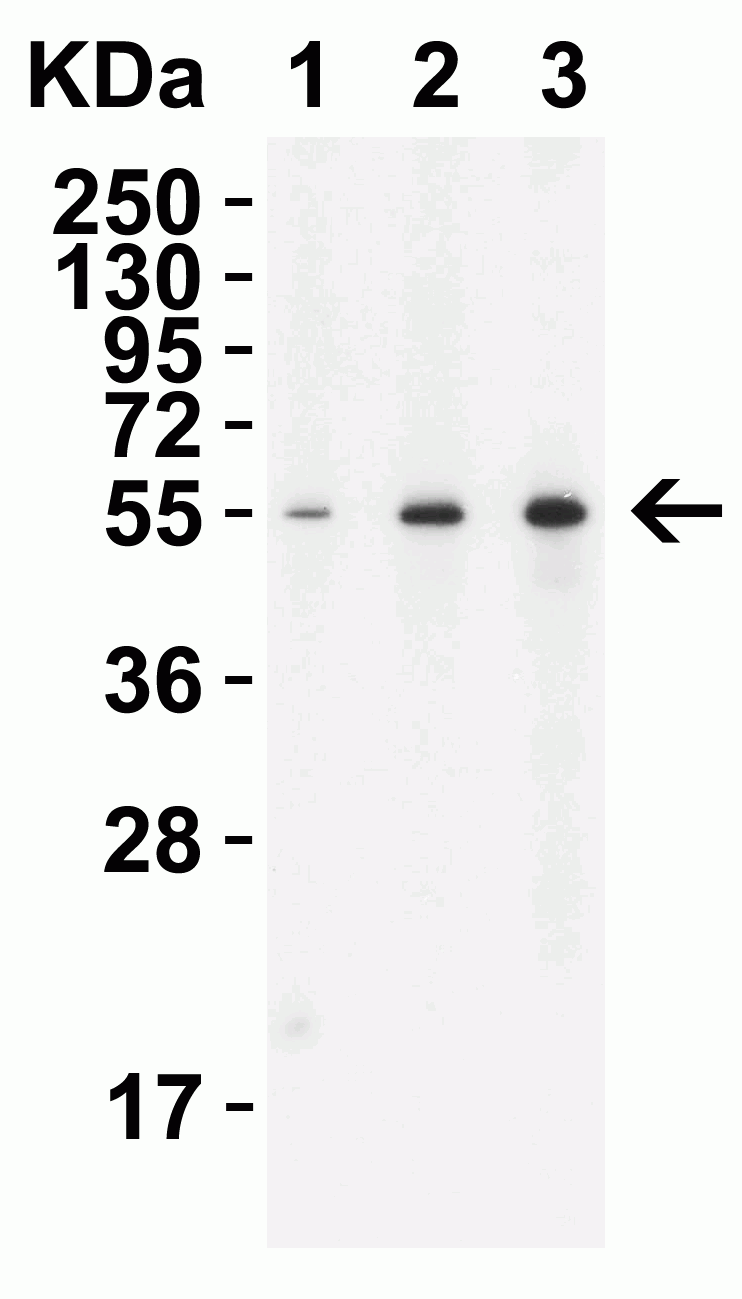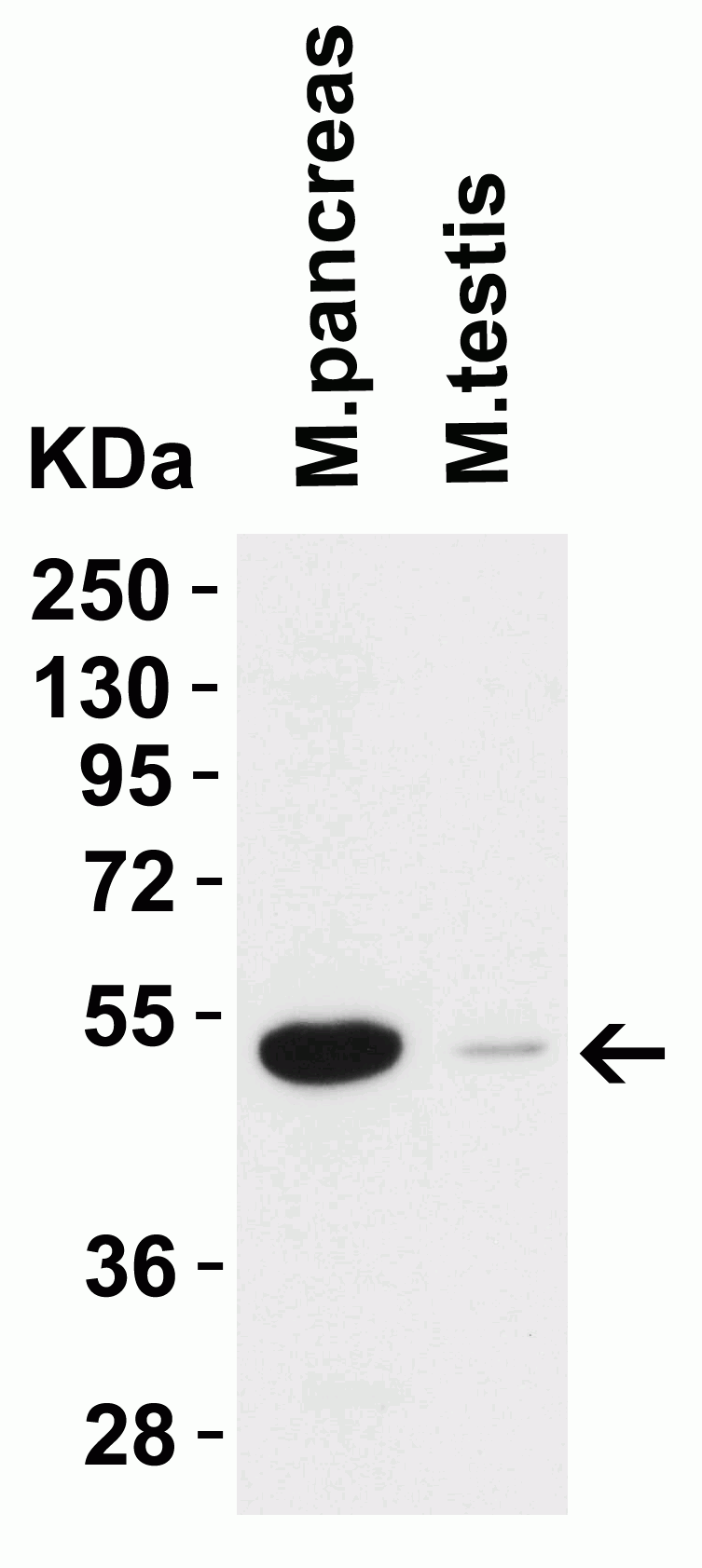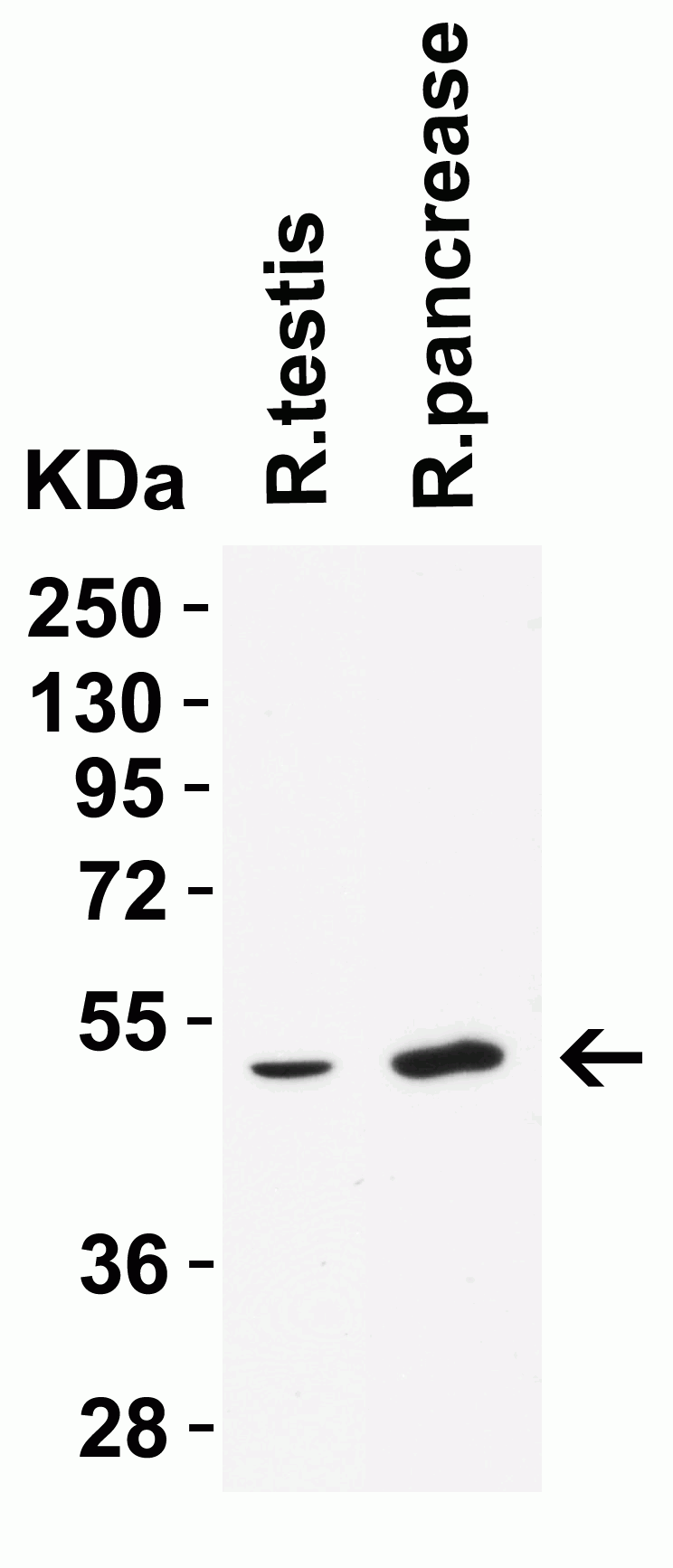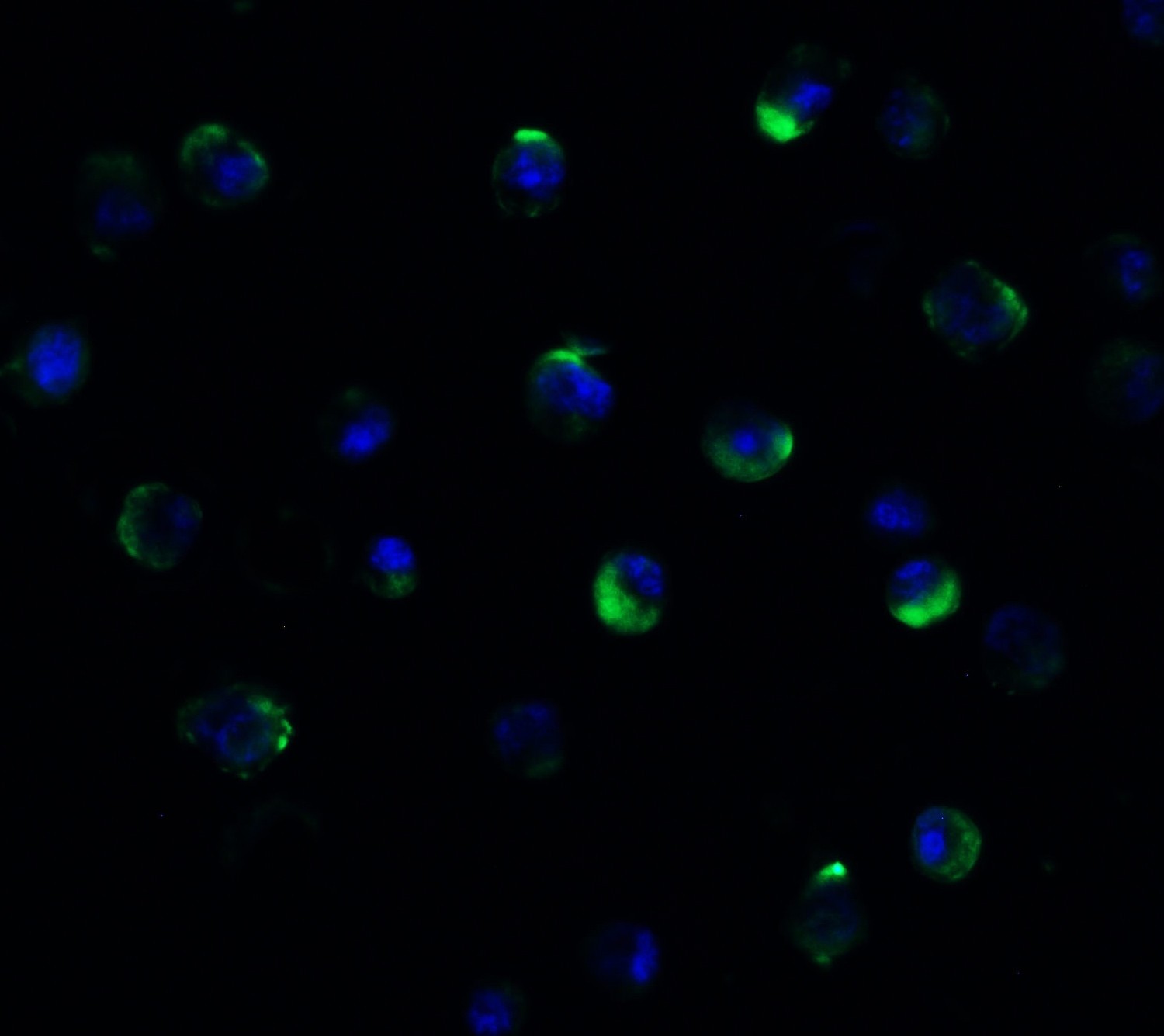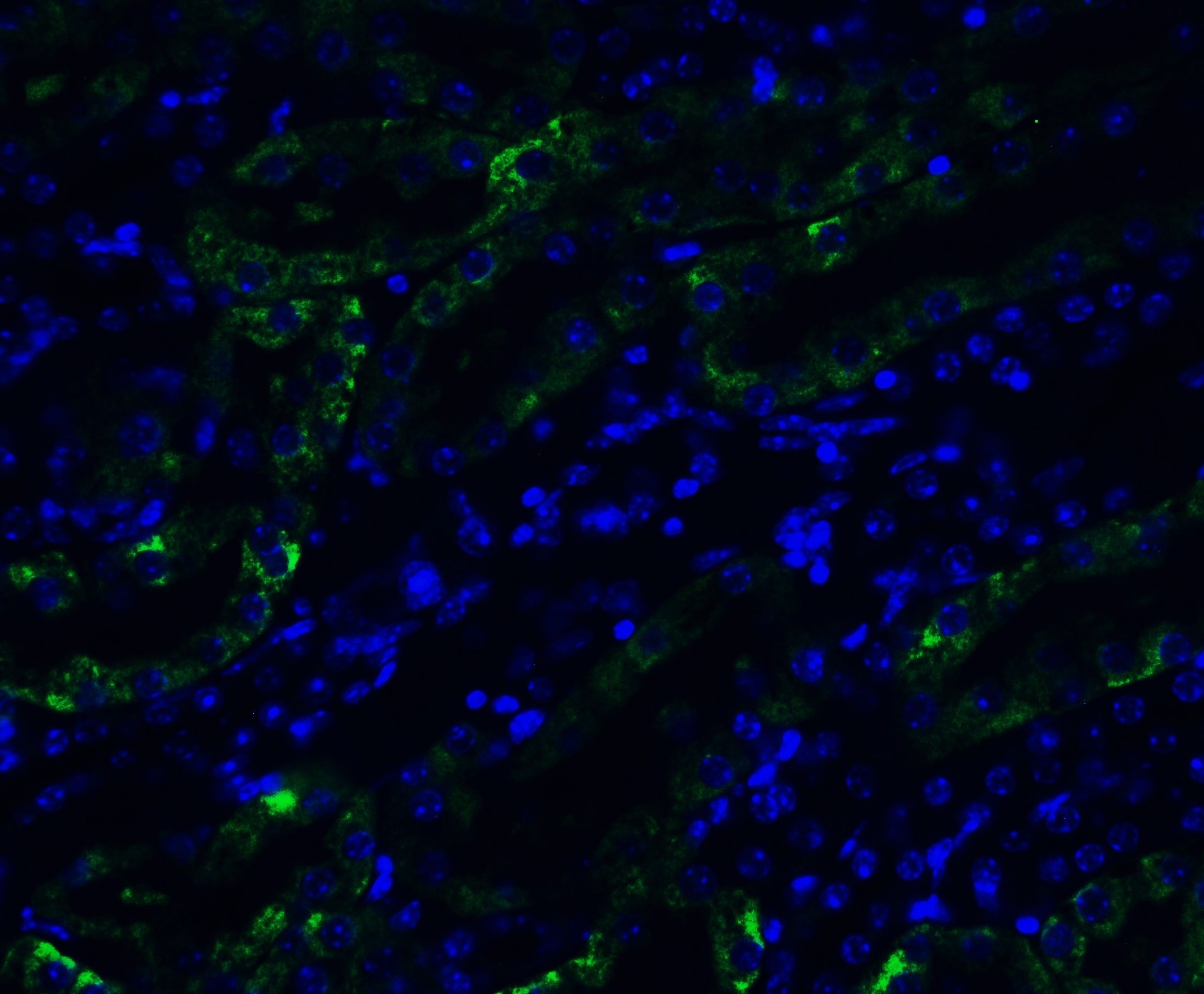TMPRSS2 (CT) Antibody
Infectious Disease, COVID-19
- SPECIFICATION
- CITATIONS
- PROTOCOLS
- BACKGROUND

Application
| WB, IF, E |
|---|---|
| Primary Accession | O15393 |
| Other Accession | O15393 |
| Reactivity | Rat |
| Host | Rabbit |
| Clonality | Polyclonal |
| Isotype | IgG |
| Clone Names | TMPRSS2 |
| Calculated MW | Predicted: 54kD Observed: 54 kD |
| Application Notes | WB: 2 μg/mL; IF: 20 μg/mL. Antibody validated: Western Blot in human, mouse and rat samples; Immunofluorescence in human, mouse and rat samples. All other applications and species not yet tested. |
| Gene ID | 7113 |
|---|---|
| Alias Symbol | TMPRSS2 |
| Other Names | TMPRSS2 Antibody: Transmembrane protease serine 2, Serine protease 10, PRSS10, Transmembrane protease serine 2 non-catalytic chain, Transmembrane protease serine 2 catalytic chain. |
| Reconstitution & Storage | TMPRSS2 antibody can be stored at 4˚C for three months and -20˚C, stable for up to one year. As with all antibodies care should be taken to avoid repeated freeze thaw cycles. Antibodies should not be exposed to prolonged high temperatures. |
| Precautions | TMPRSS2 (CT) Antibody is for research use only and not for use in diagnostic or therapeutic procedures. |
| Name | TMPRSS2 (HGNC:11876) |
|---|---|
| Synonyms | PRSS10 |
| Function | Plasma membrane-anchored serine protease that cleaves at arginine residues (PubMed:32703818, PubMed:35676539, PubMed:37990007, PubMed:38964328). Participates in proteolytic cascades of relevance for the normal physiologic function of the prostate (PubMed:25122198). Androgen-induced TMPRSS2 activates several substrates that include pro- hepatocyte growth factor/HGF, the protease activated receptor-2/F2RL1 or matriptase/ST14 leading to extracellular matrix disruption and metastasis of prostate cancer cells (PubMed:15537383, PubMed:25122198, PubMed:26018085). In addition, activates trigeminal neurons and contribute to both spontaneous pain and mechanical allodynia (By similarity). |
| Cellular Location | Cell membrane; Single-pass type II membrane protein |
| Tissue Location | Expressed in several tissues that comprise large populations of epithelial cells with the highest level of transcripts measured in the prostate gland. Expressed in type II pneumocytes in the lung (at protein level). Expressed strongly in small intestine. Also expressed in colon, stomach and salivary gland. Coexpressed with ACE2 within lung type II pneumocytes, ileal absorptive enterocytes, intestinal epithelial cells, cornea, gallbladder and nasal goblet secretory cells (Ref.21). {ECO:0000269|PubMed:11169526, ECO:0000269|PubMed:20382709, ECO:0000269|PubMed:21325420, ECO:0000269|PubMed:32404436, ECO:0000269|Ref.21} |

Thousands of laboratories across the world have published research that depended on the performance of antibodies from Abcepta to advance their research. Check out links to articles that cite our products in major peer-reviewed journals, organized by research category.
info@abcepta.com, and receive a free "I Love Antibodies" mug.
Provided below are standard protocols that you may find useful for product applications.
Background
TMPRSS2 Antibody: TMPRSS2 is a plasma membrane-anchored serine protease that participates in proteolytic cascades of relevance for the normal physiologic function of the prostate. Androgen-induced TMPRSS2 activates several substrates that include pro-hepatocyte growth factor/HGF, the protease activated receptor-2/F2RL1 or matriptase/ST14 leading to extracellular matrix disruption and metastasis of prostate cancer cells. It facilitates human coronaviruses SARS-CoV and SARS-CoV-2 infections via two independent mechanisms, proteolytic cleavage of ACE2 receptor which promotes viral uptake, and cleavage of coronavirus spike glycoproteins which activates the glycoprotein for host cell entry. It proteolytically cleaves and activates the spike glycoproteins of human coronavirus 229E (HCoV-229E) and human coronavirus EMC (HCoV-EMC) and the fusion glycoproteins F0 of Sendai virus (SeV), human metapneumovirus (HMPV), human parainfluenza 1, 2, 3, 4a and 4b viruses (HPIV). TMPRSS2 is essential for spread and pathogenesis of influenza A virus (strains H1N1, H3N2 and H7N9), and it is involved in proteolytic cleavage and activation of hemagglutinin (HA) protein which is essential for viral infectivity.
References
Lucas et al. Cancer Discov. 2014; 4(11):1310-25.
Ko et al. Cancer Res. 2015; 75(14):2949-60.
Zang et al. Sci. Immunol. 2020; 5(47):eabc3582.
If you have used an Abcepta product and would like to share how it has performed, please click on the "Submit Review" button and provide the requested information. Our staff will examine and post your review and contact you if needed.
If you have any additional inquiries please email technical services at tech@abcepta.com.













 Foundational characteristics of cancer include proliferation, angiogenesis, migration, evasion of apoptosis, and cellular immortality. Find key markers for these cellular processes and antibodies to detect them.
Foundational characteristics of cancer include proliferation, angiogenesis, migration, evasion of apoptosis, and cellular immortality. Find key markers for these cellular processes and antibodies to detect them. The SUMOplot™ Analysis Program predicts and scores sumoylation sites in your protein. SUMOylation is a post-translational modification involved in various cellular processes, such as nuclear-cytosolic transport, transcriptional regulation, apoptosis, protein stability, response to stress, and progression through the cell cycle.
The SUMOplot™ Analysis Program predicts and scores sumoylation sites in your protein. SUMOylation is a post-translational modification involved in various cellular processes, such as nuclear-cytosolic transport, transcriptional regulation, apoptosis, protein stability, response to stress, and progression through the cell cycle. The Autophagy Receptor Motif Plotter predicts and scores autophagy receptor binding sites in your protein. Identifying proteins connected to this pathway is critical to understanding the role of autophagy in physiological as well as pathological processes such as development, differentiation, neurodegenerative diseases, stress, infection, and cancer.
The Autophagy Receptor Motif Plotter predicts and scores autophagy receptor binding sites in your protein. Identifying proteins connected to this pathway is critical to understanding the role of autophagy in physiological as well as pathological processes such as development, differentiation, neurodegenerative diseases, stress, infection, and cancer.
